More than "Tongue Thrust"........
Commonly used to mean that the tongue rests habitually against or between the lips and teeth and there is forward tongue movement during swallowing.
Speech and dental problems can arise from prolonged forward rest posture and thrusting, causing crooked or misaligned teeth including open bite. Associated problems include delayed speech development, poor chewing efficiency and less attractive appearance.
What are OMD's?
Orofacial Myofunctional Disorders (OMDs) include thumb, lip, tongue and finger sucking habits; a mouth-open lips-apart posture; a forward tongue rest posture, often at or between the teeth. this can be either front teeth or to the side; and thrusting of the tongue in speaking and swallowing. These abnormal habit patterns, functional activities, and postures can open the teeth beyond the normal rest position. This leads to dental and speech problems. Here are some examples:
 |
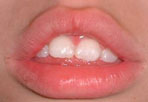 |
 |
|
 |
 |
 |
 |
 |
Services I offer with OMDs:
I can change the habitual resting tongue and lip postures and improve the swallow pattern, e.g. if tongue thrust is involved.
Initially I work on eliminating habits, e.g. digit sucking and open mouth posture. If chronic mouth-open breathing is present and related to unresolved airway issues such as enlarged tonsils or adenoids or allergies, I suggest that the person first undergo an evaluation of the airway. Conditions affecting clear nasal airway can impact significantly the development of dental problems and OMDs. Structural problems may also create difficulty keeping the lips closed. These conditions often need assessment by a specialist in order to allow for mouth and lip closure. One of the primary goals of therapy is to establish an habitually closed-lip posture and a tongue resing posture up against the roof of the mouth.
Some considerations with Orofacial Myofunctional Disorders include:
- AGE: Eliminating adverse oral habits such as digit sucking and fingernail biting are best achieved after the child is 5 years of age. The ideal age for correcting tongue thrust is about 6 to 8 years old, but work on the habitual rest posture for tongue and lips may start earlier. An exception to these ages might be if a moderate-severe speech or dental problem is present.
- DENTITION: My treatment plan is usually more successful after the permanent front teeth have come in, but lip strength and closure often can be addressed sooner.
- OTHER FACTORS to take into account are:
Maturation, ability to attend and follow directions, mental ability, neuromuscular control and general physical well being. Other important factors involve the attitude and commitment of the patient and family regarding treatment.
GOAL of Orofacial Rest Posture Therapy: Correct tongue and lip resting postures and swallowing pattern (Note: in all these photos the upper and lower back teeth are touching). OM Therapy does not replace orthodontic treatment. Examples of this:
| Before Therapy | After Therapy |
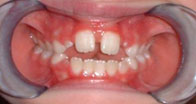 |
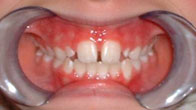 |
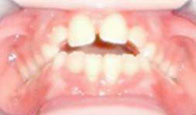 |
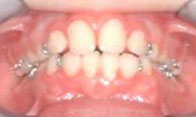 |
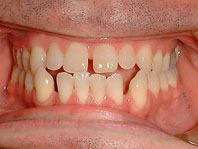 |
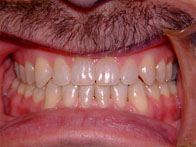 |
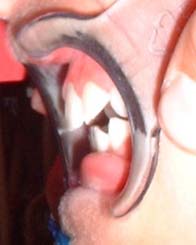 |
 |
 |
 |
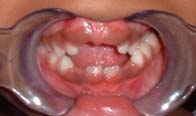 |
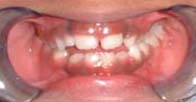 |
GOAL OF THERAPY:
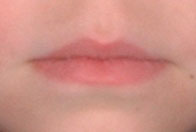 |
SEE A SPECIALIST !
CALL CHRISTINE 719-434-0888

